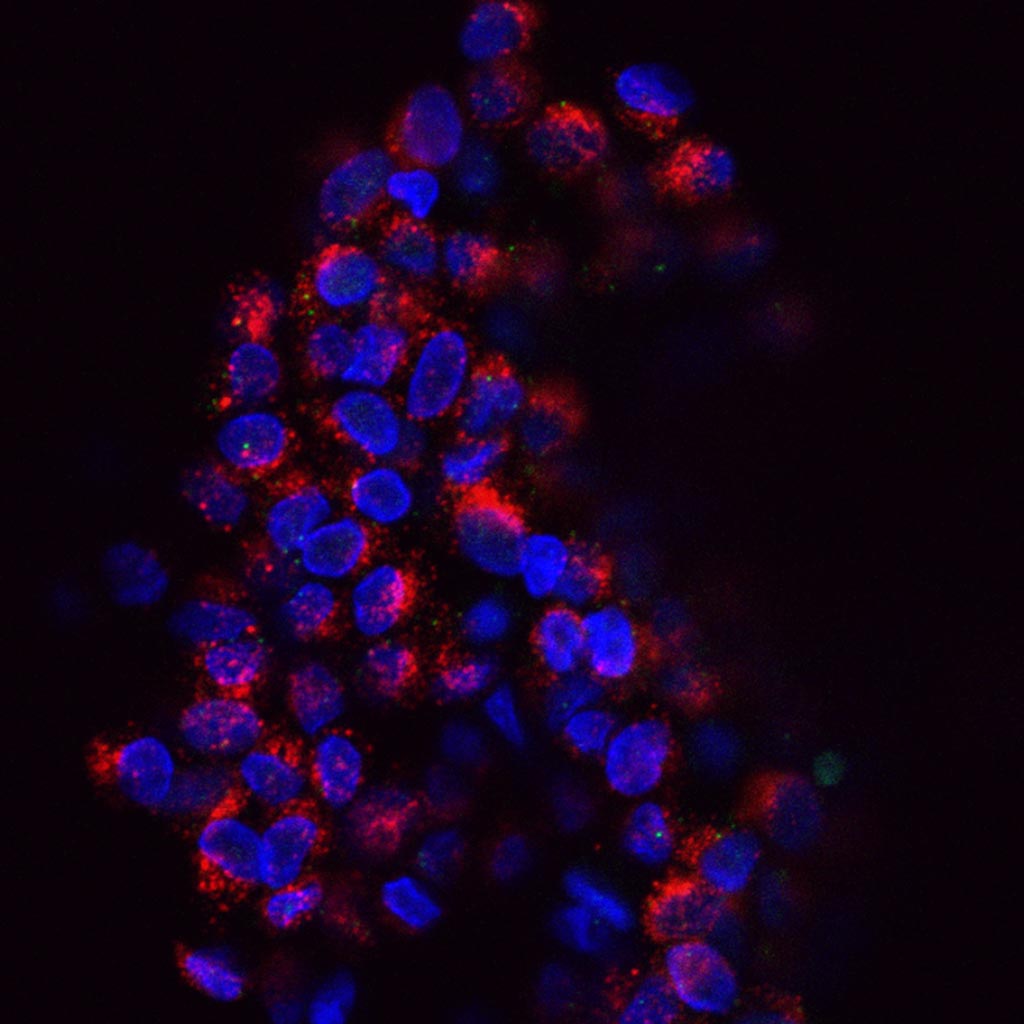Breast Cancer Diagnosed by Measuring Circulating Tumor DNA
By LabMedica International staff writers
Posted on 08 Aug 2017
An unintended consequence of a recent drug study was the discovery that measurement of circulating tumor DNA (ctDNA) could be used to diagnose a type of breast cancer with an unamplified HER2 mutation.Posted on 08 Aug 2017
HER2 is a member of the human epidermal growth factor receptor family. Amplification, over-expression, or a mutation of this oncogene has been shown to play an important role in the development and progression of certain aggressive types of breast cancer. In recent years the protein has become an important biomarker and target of therapy for approximately 30% of breast cancer patients.

Image: A cluster of circulating tumor cells (CTCs, shown in red) originated from the blood of a breast cancer patient (Photo courtesy of the NIH).
Investigators at Baylor College of Medicine (Houston, TX, USA) conducted a single arm phase II trial to assess the clinical benefit rate of the drug neratinib, a dual inhibitor of Her2 and epidermal growth factor receptor (EGFR) in HER2-mutated non-amplified metastatic breast cancer. Neratinib blocks the action of its target proteins by covalently binding to a cysteine side chain.
To conduct the study, the investigators required biopsy material from the tumor in order to determine the presence of the HER2 mutation. However, this proved to be a major difficulty, as 20 to 30% of the patients could not provide sufficient material to make the diagnosis.
In contrast, baseline ctDNA sequencing identified the same HER2 mutation in 11 of 14 tumor positive cases and correctly assigned 32 of 32 informative negative cases. Additionally, ctDNA HER2-mutant variant allele frequency decreased in nine of 11 paired samples at week four, followed by an increase upon progression.
"To assist in our ability to identify patients with HER2 mutation-positive tumors, we conducted circulating tumor DNA analysis," said senior author Dr. Matthew Ellis, professor of oncology at Baylor College of Medicine. "The tumor's DNA is released into the human bloodstream, and we were able to determine the presence of the mutation in blood samples from the patients. Importantly the circulating tumor DNA results were highly concordant with the tumor sequencing results, and they were much easier to determine. Notably, the blood test was sensitive enough that we could use it as a tool to determine eligibility for the clinical trial. A circulating tumor DNA-based blood test also could therefore be potentially used to monitor tumor progression and to determine whether patients are responding or not to treatment after just one month of therapy."
The study was published in the July 5, 2017, online edition of the journal Clinical Cancer Research.
Related Links:
Baylor College of Medicine




 assay.jpg)









